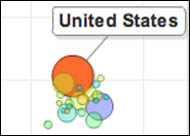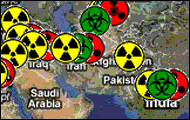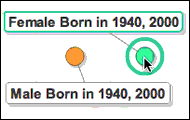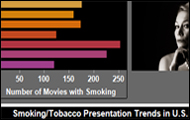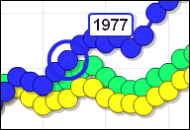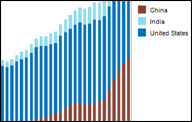
|
Environment
Latest CO2 Emissions Data by Nation, Per Capita
Carbon dioxide emissions are rising worldwide with just 20 countries responsible for more than 75 percent of them, according to new data from the Carbon Dioxide Information Analysis Center. How do the world's nations measure up? What's a nation's output come to per person? And just how big is a metric ton of CO2? Use an interactive dashboard to analyze CO2 emissions data.
|
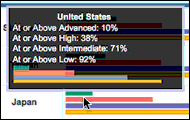 Should your middle schooler be brushing up on science during the summer break? Explore how U.S. fourth- and eighth-graders compare to their international peers with our interactive graphical scorecard.
Should your middle schooler be brushing up on science during the summer break? Explore how U.S. fourth- and eighth-graders compare to their international peers with our interactive graphical scorecard.
Related: International Math Achievement
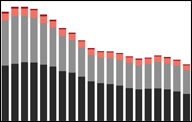 Violent crime has fallen for the third straight year, according to new data from the FBI. Murder and robbery saw sharp declines, while rape fell by just 2.4 percent when compared to 2008 estimates. Use a stack graph to see violent crime trends over time.
Violent crime has fallen for the third straight year, according to new data from the FBI. Murder and robbery saw sharp declines, while rape fell by just 2.4 percent when compared to 2008 estimates. Use a stack graph to see violent crime trends over time.
 A new study on the reading habits of kids finds digital or electronic devices may have a negative effect on reading time, family time and physical activity -- and 39 percent of children ages 9 to 17 years old think that the information that they find online is always correct. Use an interactive graph to see how advances in digital technology are changing a generation of young Americans.
A new study on the reading habits of kids finds digital or electronic devices may have a negative effect on reading time, family time and physical activity -- and 39 percent of children ages 9 to 17 years old think that the information that they find online is always correct. Use an interactive graph to see how advances in digital technology are changing a generation of young Americans.
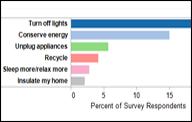 Americans are taking steps to conserve energy, just not the most effective ones, according to a new report by Columbia University's Earth Institute.
Americans are taking steps to conserve energy, just not the most effective ones, according to a new report by Columbia University's Earth Institute.
 Carbon dioxide emissions are rising worldwide with just 20 countries responsible for more than 75 percent of them, according to new data from the Carbon Dioxide Information Analysis Center. How do the world's nations measure up? What's a nation's output come to per person? And just how big is a metric ton of CO2? Use an interactive dashboard to analyze CO2 emissions data.
Carbon dioxide emissions are rising worldwide with just 20 countries responsible for more than 75 percent of them, according to new data from the Carbon Dioxide Information Analysis Center. How do the world's nations measure up? What's a nation's output come to per person? And just how big is a metric ton of CO2? Use an interactive dashboard to analyze CO2 emissions data.
 Twitter
Twitter

